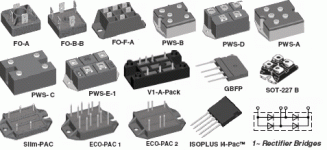Thanks all.
Andrew, I think you nailed it.
The good thing is that at the 8 ohm setting,even though my speakers are around 5 ohm impedance, the power transistors/heatsinks are not hot - just slightly warm(even when playing music loud for lenghthy periods.So, I guess it's safe to leave the switch in the 8 ohm position.
Recall somewhere that mention was made to NEVER use such a switch as it was detrimental to the sound and involved additional circuitry?
Andrew, I think you nailed it.
The good thing is that at the 8 ohm setting,even though my speakers are around 5 ohm impedance, the power transistors/heatsinks are not hot - just slightly warm(even when playing music loud for lenghthy periods.So, I guess it's safe to leave the switch in the 8 ohm position.
Recall somewhere that mention was made to NEVER use such a switch as it was detrimental to the sound and involved additional circuitry?
After many hours of constant run in by leaving the amp on,24/7, the original beeswax block and large motor run cap set up has gotten better sounding. The sound seems very fast, dynamic and great controlled and deep low notes. Snare drums or drums of any sort have an amazing speed and timbre that is a pure delight. You can easily hear drum skins being hit with sticks or felt beaters - no problem distinguishing which is which or what type of drum is in action.
All in all, the cap bank/mod has truly proved it's worth in combination with the IXYS rectifier block: VB068 - 12N07 1-PHASE RECTIFIER BRIDGE (ECO-PAC1 case).
All in all, the cap bank/mod has truly proved it's worth in combination with the IXYS rectifier block: VB068 - 12N07 1-PHASE RECTIFIER BRIDGE (ECO-PAC1 case).
Attachments
Shame, just as i was nailing down the receiver's KR-V number.
The knob tip looks very interesting though, due time to try an alternate experiment technique, i already wonder what i'll sound like.
Herbs shouldn't be advocated, they'll pollute the object-ive experience.
Maybe some Amyl Nitrite for an enhanced recording during clipping sequences.
The knob tip looks very interesting though, due time to try an alternate experiment technique, i already wonder what i'll sound like.
Herbs shouldn't be advocated, they'll pollute the object-ive experience.
Maybe some Amyl Nitrite for an enhanced recording during clipping sequences.
G.Kleinschmidt said:P.R.A.T can be experienced much more intimately
And G.Kleinschmidt will graciously allow use of his collection of avatars for a full audio-visual experience.
Bypassing big Elko with small plastic cap is not as simple as it looks. The Elko and the small bypass cap can form LC oscillator, frequency peaks and dips can be perceived as "better details" or "better treble".
There's a lengthy discussion about this matter on this website, under power supply section or classD section or "Snubber" topic.
Some explenation made by member EVA.
There's a lengthy discussion about this matter on this website, under power supply section or classD section or "Snubber" topic.
Some explenation made by member EVA.
jacco vermeulen said:, due time to try an alternate experiment technique, i already wonder what i'll sound like.
Please don't post a picture.
jrockhead said:All in all - a different sound was the end result.......BUT.........SOMETHING IS NOT RIGHT
Uh Oh......
.........on large dynamics such as percussion music, closely miked kettle drums, I noticed some distortion coming in to the equation. Replacing the bypassed bank with a couple of 20, 000 uf Nippon Chemicon vintage caps, the distortion went away so it seemed.
I always thought that the metal wrapper on an electrolytic is actually part of the unit and needs to be there for proper operation. Not to be confused with "nude" capacitors with the paper or plastic insulating wrapper removed. I still don't understand "nude" capacitors, what difference could it possibly make but I digress.
So putting back some "normal" caps made the nasties go away, I'm thinking you ruined a perfectly good set of caps. Try the same caps in there without removing anything and use the same bypass caps and listen to how it sounds. My curiosity is now fired up.
You probably forgot about wires that go from rectifier to caps, then from caps to your amp. You can shunt your electrolytics by some films right there, with as short as possible wires. Or, you can add fat electrolytics on long wires. But not vice verse.
off topic
which part of this post addresses the topic "bypassing electrolytics"?infinia said:Apparently evil in this forum if you get banned for being subjective on it.
- Status
- This old topic is closed. If you want to reopen this topic, contact a moderator using the "Report Post" button.
- Home
- Amplifiers
- Solid State
- Bypassing electrolytics - GOOD or EVIL ?

 Bigoted and personal attacks removed.
Bigoted and personal attacks removed.